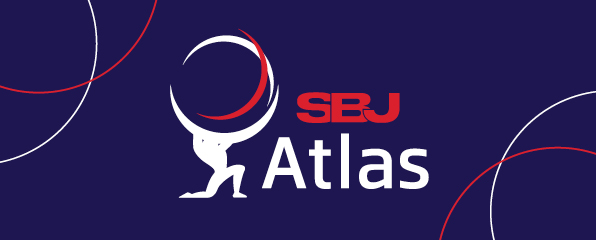Objectively Determining ROI for Live Brand Experiences

Live brand experiences are synonymous with sports and entertainment events. Every major event from the Super Bowl, World Series and NBA and NHL championships to live music, cultural or film gatherings, such as South by Southwest, Lollapalooza and the Sundance Film Festival, all feature brands activating in a variety of ways.
The crowds are eager to be entertained and brands know they need a presence to help build brand recognition and customer loyalty, but what about ROI? What kind of returns are brands getting for their activations?
Measuring Experience ROI
The live experience industry has never had an accepted method of measuring ROI…until now.
GMR Marketing pioneered experience marketing in 1979 and, in 2023, has pioneered a data measurement model to not only measure ROI, but also predict the ROI a company could achieve based on several predetermined factors.
“We have over five years of data that gives us a good understanding of what’s going to happen following specific actions,” said Tyson Webber, President and CEO of GMR Marketing. “Our data scientists have developed an algorithm that, given the right set of inputs, can accurately predict what the return will be on any given experience a person has.”
Memory Making
While the time people spend at a brand activation can be fleeting, the memories they make could last a lifetime.
“Given the right circumstances and carefully selected tactics, a great brand experience can easily become part of our personal repository of memories that we get to revisit again and again,” said Webber.
Some memories are stronger than others and can transport someone back to the moment they experienced it. These autobiographical memories are like a string of lights, burning at different levels of intensity. From a brand perspective, they can change a person’s perception of the brand, influence their loyalty and affect conversion and purchasing. Studies have shown that when someone is fully engaged in a multisensory brand experience, they’re six times more likely to remember the brand and make a purchase.
SOLE Science(™)
Through years of research and refining, GMR Marketing has developed the String of Lights Effect — SOLE Science™. This quantitative and qualitative approach to measuring the value and impact of a brand experience takes advantage of machine learning and statistical modeling to discover the impact of each experience, how it affects a person’s memory making and what the effect on consumer behavior will be at the point of purchase.
The key is to generate the bulbs that burn the brightest, creating the most intense memories. GMR Marketing accomplishes this through its Three Factor Model and Experience EQ.

Three Factor Model
The three-part strategy to developing a successful, memorable activation are the experience’s:
· Relevance to context — the degree to which the activation aligns with the event and the audience’s expectations.
· Level of engagement — the number of touchpoints an attendee interacts with.
· Sensory immersion — the number and intensity of senses engaged within an experience.
The Three Factor Model is incorporated into every activation GMR Marketing develops.
Experience EQ
GMR Marketing’s Experience EQ framework enables brands to anticipate and fulfill their audiences’ need states. As depicted below, need states include release, identity, belonging and enrichment — and the scale of the needs’ spectrum are defined as self, others, security and openness.
The result is an overlay of experience territories — community, self-expression, discovery and joy — that can generate different expressions — cultureship, inclusivity, replenishment and connectedness.

By employing Experience EQ, brands can develop experiences that will better resonate with an audience at a given event. This enables brands to confidently select the right set of activation tactics, build ideas around the live event environment and balance the attendees’ need states with their business objectives, all of which can help the brand improve ROI on that experience.
By identifying where attendees fall on this map for a particular event, brands can dial up the precise activation plan that will generate autobiographical memories and generate a strong ROI. It’s like a sound engineer adjusting the levers on a mixing board to create the ultimate sound experience.

For example, fans attending a Super Bowl are expecting a far different experience than fans attending The Masters. The same activation at these two events will not produce the same results. But, by adjusting the activation plans based on the Experience EQ, brands can develop an experience for each event that best reaches that event’s audience.
“By using this scientific model, consumers will have a far more memorable experience that leads them to change how they think, feel or behave with that brand,” said Webber.
Brand Ranking
GMR Marketing employed its Three Factor Model and Experience EQ to develop the GMR Brand Experience Index© (GBEI), the first ever holistic assessment on the impact of brand experience to determine ROI. Thousands of hours of in-market research and machine learning worked in tandem to generate long-term brand memories that affect down funnel behaviors.
Through this evaluation, GMR Marketing found that brands in the top 25% of the index developed memory-making activations, provided positive reactions from attendees and stood out from other onsite activations.
Dialing Up Successful Live Experiences
Through the insights gained from SOLE Science, and the deployment of the Three Factor Model and Experience EQ, brands can develop the activation best suited for attendees at individual events. This enables brands to create a differentiated and memorable experience.
“Brands that take advantage of this scientific model will have definitive information and the ability to make their experience the most effective and efficient in their space. You have to have the human and the consumer at the heart of what you’re doing,” Webber concluded.





